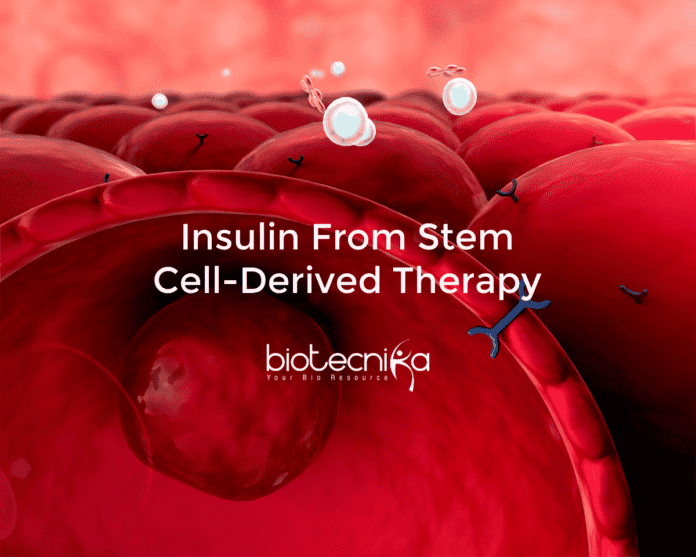Insulin From Stem Cell-Derived Therapy Made Possible By Viacyte
Stem cell therapies have become increasingly versatile. Two presentations at this fall’s Cell & Gene Meeting on the Mesa in Carlsbad illustrated how the stem cell therapy field is maturing.
San Diego’s ViaCyte is now developing 2 versions of experimental diabetes treatment, using insulin-producing cells grown from the embryonic stem cells. The cells are encapsulated in a device that is implanted below the skin.
One of the versions, called PEC-Direct, shows intermittent signs of producing therapeutic levels of insulin, the first time this has been seen, said ViaCyte’s CEO, Paul Laikind.
And this was seen indirectly through the presence of a by-product of insulin production. However, the production is not reliable enough to substitute for injected insulin, Laikind said. ViaCyte is now working to improve reliability.
PEC Direct is meant for the most severe cases of type 1 (insulin-dependent) diabetes. It allows the blood vessels to grow into the device to contact the cells. In order to prevent an immune reaction, the patients get immunosuppressive drugs.
The other ViaCyte product, PEC-Encap, shields the cells from direct contact. Immune-suppressing drugs are not required here. However, it did not work well in early
testing, because scar tissues built up around the implant.ViaCyte has worked on that problem with its partner W. L. Gore & Associates– the makers of Gore-Tex. Gore-Tex makes the implant material and has been collaborating with ViaCyte to make it less likely to produce the scarring. The early signs are that the newly formulated material is meeting that goal.
Another company Cleveland-based Athersys, at the meeting, reported on its multi-purpose cell product, MultiStem. It is in late-stage or Phase III testing for stroke, caused by blood clots. It is also in testing for heart attacks and being considered for brain trauma.
Athersys’s MultiStem is a proprietary cell that can be given off the shelf to different patients. It is obtained from adult bone marrow. Gil Van Bokkelen, Athersys chairman & CEO, said MultiStem does not provoke an immune reaction.
The cells secrete various proteins & other substances that reduce inflammation and promote healing, Van Bokkelen said. They do not persist and eventually disappear from the body.
The healing potential of multistem got the attention of doctors at The University of Texas Health Science Center at Houston,& the Department of Defense, he added.
Now, Athersys is planning a midstage, or Phase II, the trial of MultiStem in trauma patients. The goal here is to temporarily reduce inflammation, which goes to excess in trauma.
He added if we can tip the scales in favor of more constructive response, stop the bad stuff, that hyper-inflammatory tidal wave, we can really alter the trajectory of how the patient rebounds.
Van Bokkelen said while these cells naturally exist in the body, there are not enough of them to take care of major injuries.
It is all about kinetics, he added. In major trauma, we are talking about minutes or hours. We do not talk about weeks; And so the cells simply cannot respond fast enough to be able to have the impact that we see that we can have.
Editor’s Note: Insulin From Stem Cell-Derived Therapy Made Possible By Viacyte, PEC-Direct, shows intermittent signs of producing therapeutic levels of insulin, PEC-Encap, shields the cells from direct contact.






























